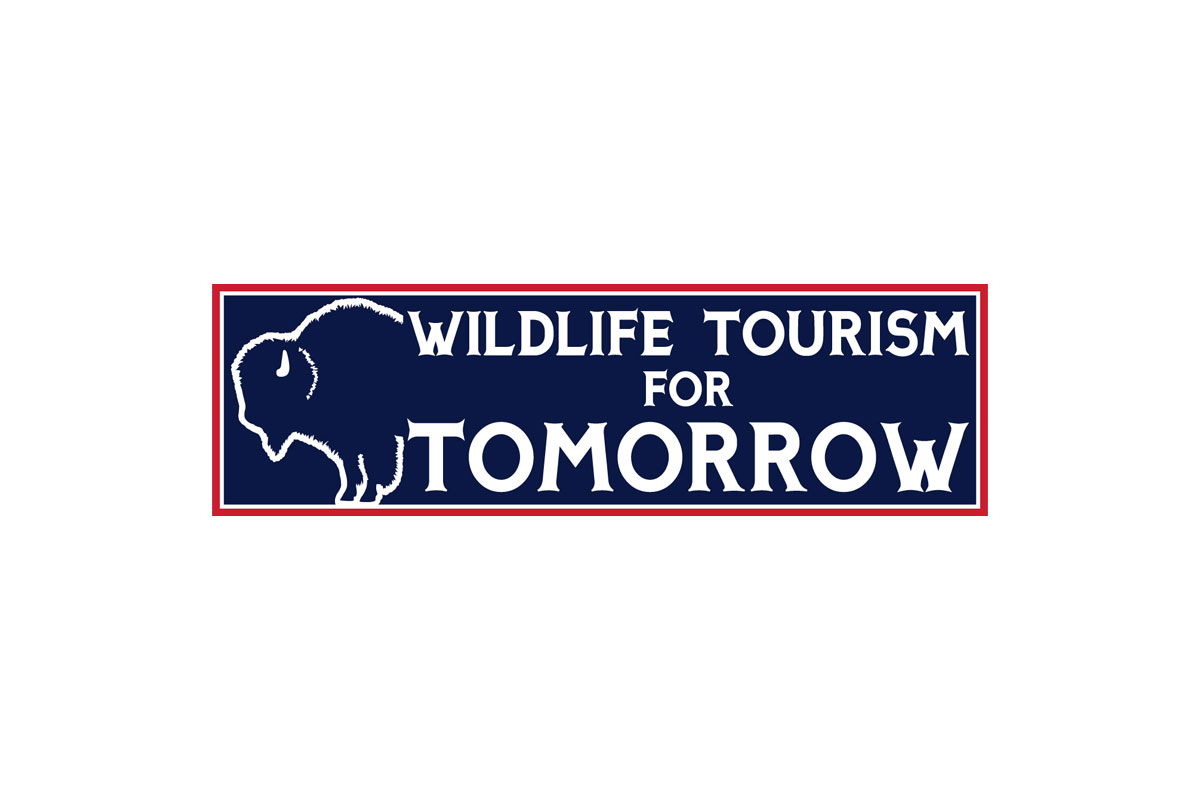Embarking on a journey into the realm of wildlife tourism for tomorrow, we delve into the intricate tapestry of responsible travel practices, unraveling the profound impact tourism can have on both wildlife and local communities. As we navigate this delicate balance, we explore innovative approaches and envision a future where wildlife tourism flourishes in harmony with conservation goals.
Wildlife tourism, when conducted responsibly, offers a myriad of benefits, from economic empowerment to biodiversity conservation. However, it is imperative to address the potential challenges and ethical considerations associated with wildlife encounters. By embracing sustainable practices, we can mitigate negative impacts and ensure the well-being of both wildlife and their habitats.
Sustainable Wildlife Tourism Practices

Sustainable wildlife tourism aims to minimize the negative impact of tourism on wildlife and their habitats while promoting conservation efforts. Responsible tourism guidelines for wildlife encounters ensure that interactions with animals are conducted ethically and respectfully.
Best practices for minimizing impact on wildlife and their habitats include observing animals from a distance, avoiding disturbing their natural behaviors, and refraining from feeding or touching them. Certification and accreditation programs, such as the Global Sustainable Tourism Council (GSTC), provide a framework for tourism operators to implement sustainable practices and demonstrate their commitment to responsible wildlife tourism.
Certification and Accreditation Programs
- GSTC: A global organization that sets standards for sustainable tourism, including wildlife tourism.
- Wildlife Friendly Enterprise (WFE): A certification program that recognizes tourism businesses that meet specific criteria for responsible wildlife tourism.
- Rainforest Alliance: A non-profit organization that certifies sustainable tourism practices, including wildlife tourism.
Benefits of Wildlife Tourism

Wildlife tourism has emerged as a significant economic driver, providing substantial benefits to local communities and conservation efforts. It has the potential to generate income, create jobs, and foster sustainable practices that protect wildlife and their habitats.
Economic Benefits
Wildlife tourism contributes directly to local economies through various revenue streams. These include park entrance fees, tour operator services, accommodation, transportation, and souvenirs. Studies have shown that a significant portion of tourism revenue in many regions is generated by wildlife-related activities.
For instance, in Kenya, wildlife tourism accounts for over 10% of the country’s GDP and employs over 2 million people. Similarly, in South Africa, the Kruger National Park generates over $1 billion in revenue annually, supporting local businesses and creating thousands of jobs.
Conservation Impact
Wildlife tourism can provide incentives for local communities to protect wildlife and their habitats. By generating income from tourism, communities have a vested interest in maintaining the health and abundance of wildlife populations. This has led to the establishment of community-based conservation areas, where local people play a role in managing and protecting wildlife.
For example, the Maasai Mara National Reserve in Kenya has implemented a community-based tourism program that allows local communities to benefit from tourism revenue. This has incentivized the Maasai people to protect the wildlife and their traditional lands, leading to a significant increase in wildlife populations.
Educational and Cultural Value
Wildlife tourism offers educational and cultural experiences that can foster a greater appreciation for the natural world. Visitors can learn about wildlife behavior, ecology, and conservation efforts through guided tours, wildlife documentaries, and interactive exhibits.
Additionally, wildlife tourism can promote cultural exchange between tourists and local communities. Tourists can learn about traditional practices, customs, and beliefs related to wildlife and the environment. This can lead to a deeper understanding and respect for different cultures and ways of life.
Challenges in Wildlife Tourism: Wildlife Tourism For Tomorrow
Wildlife tourism offers numerous benefits, but it also presents several challenges that must be carefully considered to ensure the well-being of wildlife and their habitats. These challenges include potential negative impacts on wildlife, ethical considerations related to animal encounters, and the difficulty of balancing tourism revenue with conservation goals.
Negative Impacts on Wildlife and Habitats, Wildlife tourism for tomorrow
Wildlife tourism can have various negative impacts on wildlife and their habitats, including:
- Habitat Degradation:Increased tourist traffic can lead to habitat degradation, such as the destruction of vegetation, pollution, and noise, which can disrupt wildlife behavior and breeding patterns.
- Wildlife Disturbance:Close encounters with tourists can disturb wildlife, causing stress, altering their behavior, and even leading to displacement from their natural habitats.
- Disease Transmission:Contact between tourists and wildlife can increase the risk of disease transmission, both to humans and animals.
- Poaching and Illegal Wildlife Trade:Wildlife tourism can inadvertently contribute to poaching and illegal wildlife trade by increasing demand for wildlife products and providing opportunities for traffickers.
Ethical Considerations
Ethical considerations play a crucial role in wildlife tourism. Tourists have a responsibility to respect wildlife and their habitats, and to minimize their impact on these sensitive ecosystems. Key ethical considerations include:
- Animal Welfare:Wildlife should not be subjected to unnecessary suffering or distress for the sake of tourism. This includes avoiding direct contact with animals, observing them from a distance, and not feeding or harassing them.
- Conservation Goals:Wildlife tourism should not prioritize revenue generation over the conservation of wildlife and their habitats. It is essential to ensure that tourism activities do not harm wildlife or undermine conservation efforts.
- Local Communities:Wildlife tourism should benefit local communities and contribute to their sustainable development. This includes involving local people in tourism operations and sharing the economic benefits of tourism with them.
Balancing Tourism Revenue with Conservation Goals
Balancing tourism revenue with conservation goals is a significant challenge in wildlife tourism. Tourism can provide much-needed financial resources for conservation efforts, but it is essential to ensure that these revenues are used wisely and do not compromise the well-being of wildlife.
Key considerations include:
- Sustainable Tourism Practices:Implementing sustainable tourism practices, such as limiting visitor numbers, controlling access to sensitive areas, and educating tourists about responsible behavior, can help minimize the negative impacts of tourism on wildlife.
- Conservation Funding:Ensuring that a portion of tourism revenue is dedicated to conservation efforts can help support research, habitat protection, and wildlife management programs.
- Community Involvement:Engaging local communities in tourism operations and sharing the benefits of tourism with them can foster a sense of ownership and responsibility for wildlife conservation.
Innovative Approaches to Wildlife Tourism
Wildlife tourism has evolved significantly, with innovative models and technologies enhancing sustainability and wildlife conservation. This section explores some of these innovative approaches, highlighting examples and discussing their impact on the industry.
Example-Based Tourism Models
Innovative tourism models prioritize sustainability and wildlife conservation, promoting responsible practices among tourists and local communities. Examples include:
- Community-Based Tourism:Involves local communities in tourism operations, empowering them to manage wildlife resources and benefit from tourism revenue.
- Ecotourism:Focuses on minimizing environmental impact and promoting conservation through responsible practices and education.
- Wildlife Rehabilitation Tourism:Allows tourists to participate in wildlife rehabilitation programs, contributing to conservation efforts and gaining a deeper understanding of wildlife.
Technology-Based Solutions
Technology plays a crucial role in enhancing wildlife tourism experiences and promoting responsible practices. Examples include:
- Virtual Reality (VR) and Augmented Reality (AR):Provide immersive experiences that allow tourists to interact with wildlife from a safe distance, reducing disturbance and promoting virtual tourism.
- Mobile Applications:Offer real-time information on wildlife sightings, conservation efforts, and responsible tourism practices, empowering tourists to make informed choices.
- Blockchain Technology:Enhances transparency and accountability in wildlife tourism operations, ensuring ethical practices and protecting wildlife.
Wildlife Tourism for Future Generations

Envisioning the future of wildlife tourism requires a delicate balance between preserving the well-being of wildlife and supporting the livelihoods of local communities. To achieve this, we must prioritize sustainability and responsible practices.
Promoting sustainable wildlife tourism practices is paramount. Tour operators should adhere to strict guidelines that minimize environmental impact and respect wildlife behavior. Education and awareness campaigns are crucial to instill responsible tourism practices among tourists, ensuring they understand the importance of respecting wildlife and their habitats.
Key Strategies for Sustainable Wildlife Tourism Practices
| Strategy | Description |
|---|---|
| Habitat Protection | Prioritize conservation efforts to safeguard wildlife habitats and ecosystems. |
| Wildlife Welfare | Implement measures to ensure the well-being of wildlife, including responsible observation and minimizing disturbance. |
| Local Community Involvement | Engage local communities in tourism initiatives to foster ownership and economic benefits. |
| Education and Awareness | Educate tourists and tour operators on responsible wildlife tourism practices to minimize negative impacts. |
| Monitoring and Evaluation | Regularly monitor and evaluate tourism activities to identify areas for improvement and ensure sustainability. |
Policymakers, tour operators, and tourists each have a vital role in contributing to responsible wildlife tourism. Policymakers can establish regulations and incentives that promote sustainable practices. Tour operators must prioritize wildlife welfare and adhere to ethical guidelines. Tourists should be mindful of their behavior, respect wildlife, and support local conservation efforts.
Recommendations for Responsible Wildlife Tourism
- Choose tour operators committed to sustainability and wildlife welfare.
- Respect wildlife by observing from a distance and avoiding disturbing their behavior.
- Support local communities by purchasing souvenirs and services from local businesses.
- Learn about the wildlife and their habitats before visiting to minimize disruption.
- Share responsible tourism practices with others to raise awareness and promote ethical wildlife encounters.
Last Point
As we shape the future of wildlife tourism, it is crucial to prioritize sustainability, innovation, and collaboration. By empowering local communities, embracing technology, and fostering a culture of responsible tourism, we can create a thriving industry that supports both wildlife conservation and economic growth.
Let us embrace the transformative power of wildlife tourism for tomorrow, ensuring a harmonious coexistence between humans and nature for generations to come.
FAQs
What are the key principles of responsible wildlife tourism?
Responsible wildlife tourism prioritizes the well-being of wildlife and their habitats, minimizes negative impacts, supports local communities, and promotes conservation efforts.
How can wildlife tourism contribute to conservation?
Wildlife tourism can generate revenue for conservation initiatives, support research and monitoring programs, and raise awareness about the importance of wildlife protection.
What are the ethical considerations in wildlife tourism?
Ethical wildlife tourism respects animal welfare, avoids disturbing wildlife, and ensures that interactions do not compromise the health or safety of animals.